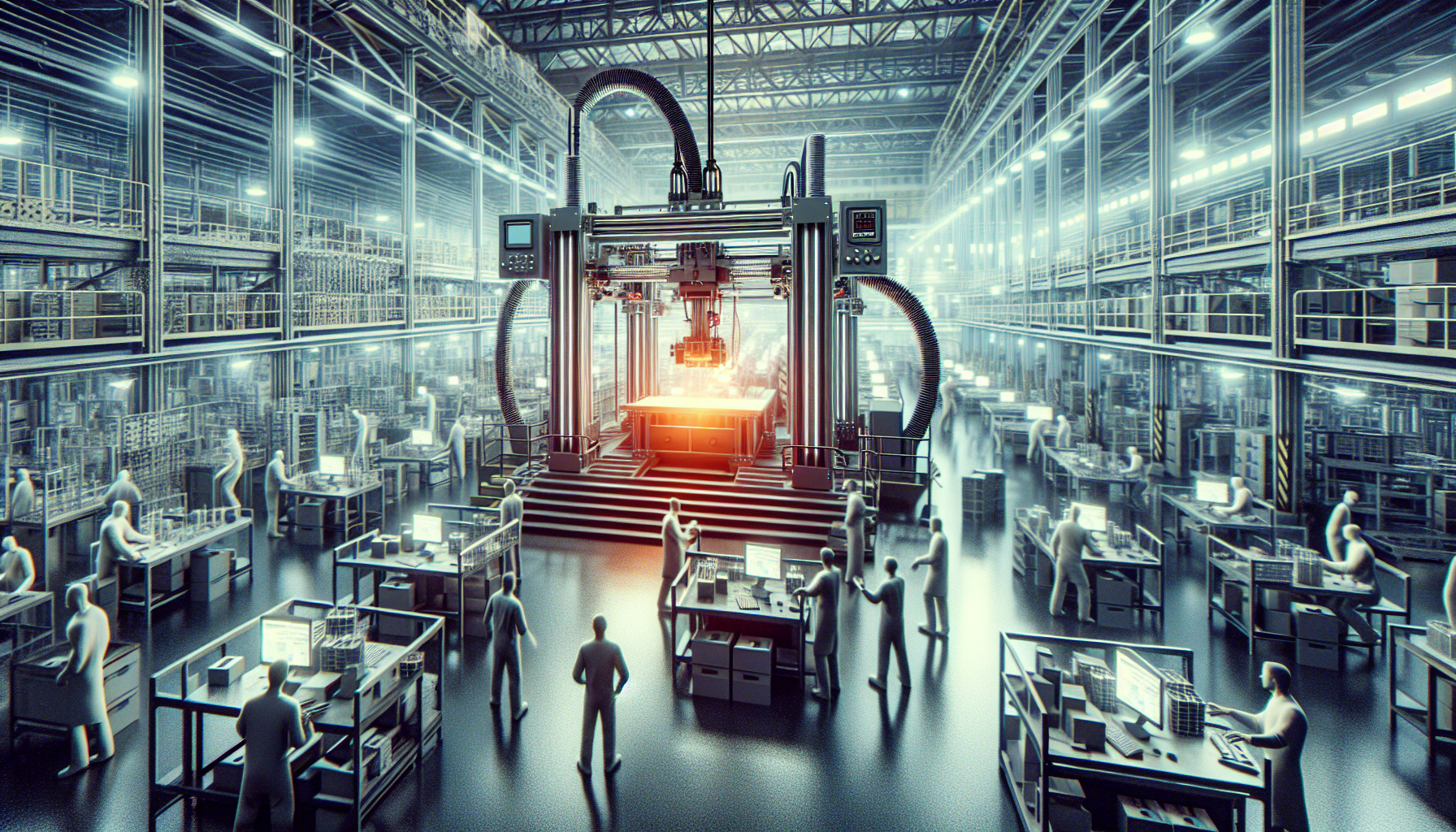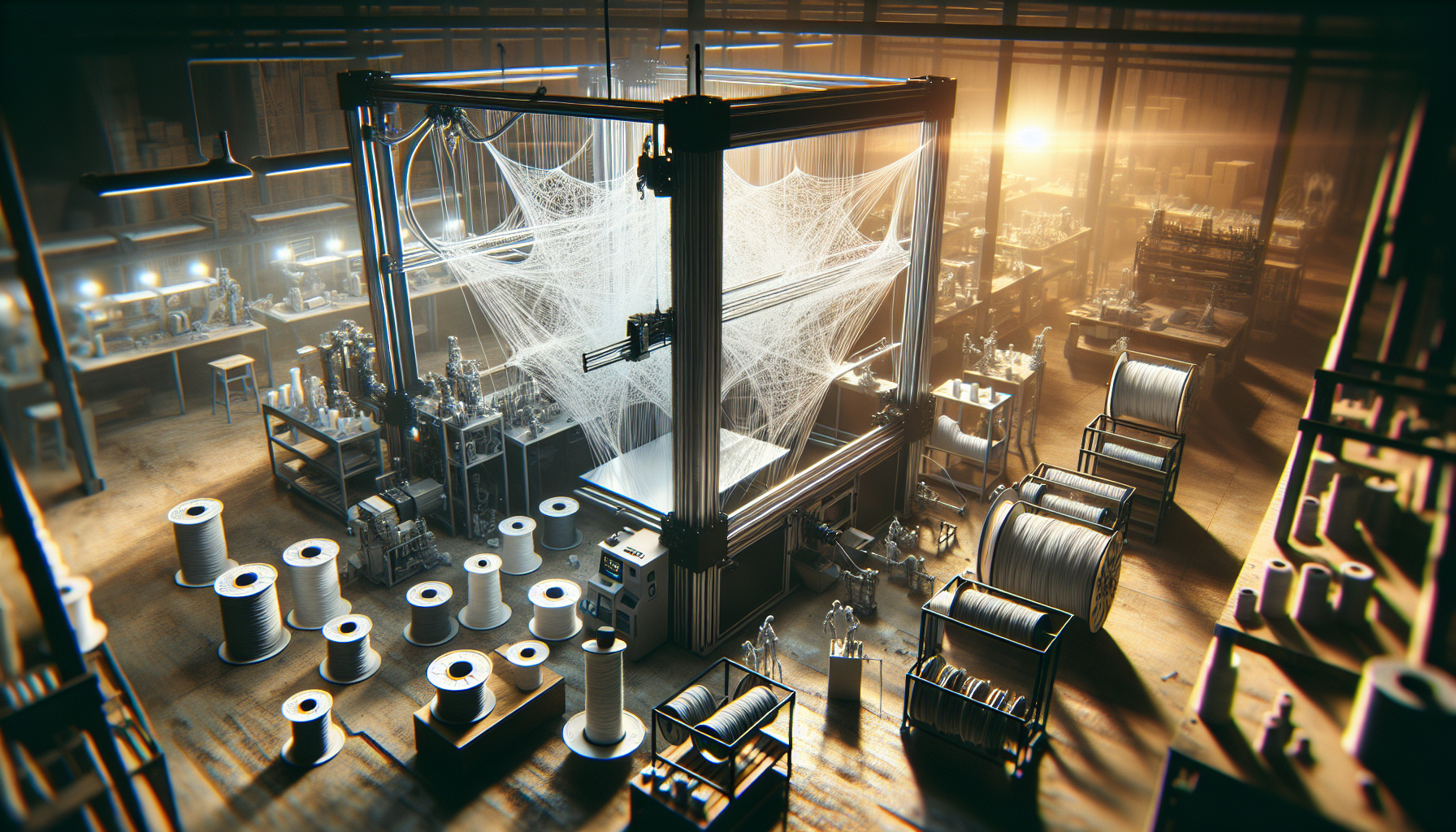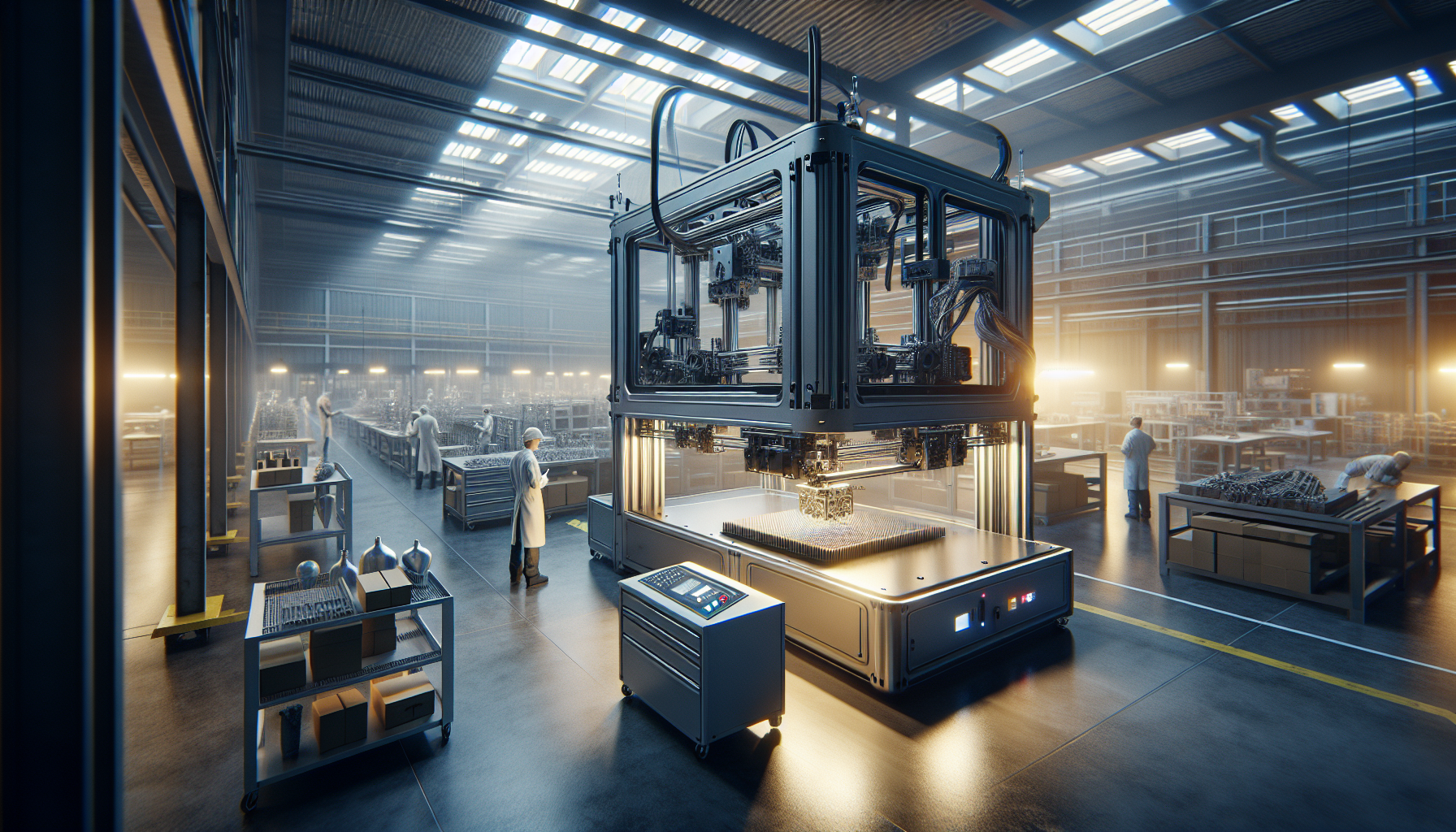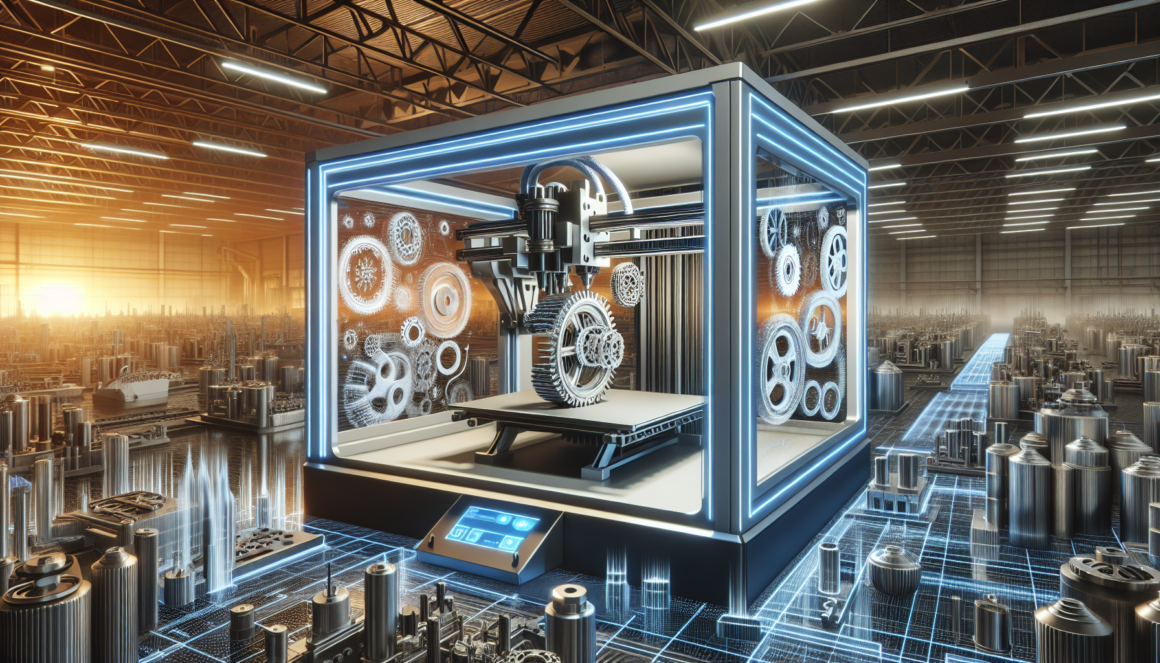Personalization on a global scale: the contribution of the 3D printer
The industrial revolution 4.0 has opened the doors to new production methods, among which industrial 3D printing holds a special place. This technology, synonymous with flexibility and innovation, marks an era of global customization. In addition, the advent of additive manufacturing provides concrete answers to the current challenges of speed, customization and sustainability.
Adaptation of businesses to technological advances
To remain competitive, companies must adapt to new technologies and integrate advances in 3D printing. The personalization that this technology offers is exemplified by innovative initiatives such as Steakholder Foods which, thanks to 3D printing, offers surprising food alternatives. To understand how your company can align with these trends, do not hesitate to explore the avenues offered by the field of additive manufacturing.
Concrete applications on the market
To understand the impact of 3D printing, it is enough to note that products such as bacon can now be printed in 3D, so much so that the Carrefour supermarket chain distributes them in more than 400 stores. This feat is not isolated, metal 3D printing services are also experiencing unprecedented growth, as demonstrated by the ranking established by impressionen3d.net.
Innovation and process optimization
The continuous search for progress makes 3D printing even more flexible and adapted to customer needs. MIT, for example, has developed a revolutionary ink that allows 3D printed objects to change color. Innovations like this open up immense possibilities for further customization and portend the ever-increasing potential of additive manufacturing.
Advanced simulation represents another facet of cost optimization in 3D printing; according to Dr Omar Fergani, his software has enabled clients to reduce their printing expenses by 30%. This concretely demonstrates that technology not only simplifies production, but also influences profitability.
Impacts on mass production
3D printing is gradually making its way into mass production, and sectors such as dentistry are leading the way, with the daily production of hundreds of thousands of 3D printed dental aligners. This illustrates how the industrial additive manufacturing scales to meet large-scale production needs while maintaining personalization for each user.
Support for sustainability
The lifespan of packaging and its impact on the environment are major concerns at the moment. 3D printing offers solutions by making it possible to design sustainable packaging that is perfectly suited to products, thus supporting a greener and more responsible economy.
With significant growth expected in the years to come, industrial additive manufacturing is positioned as a strategic lever for any company wishing to innovate and personalize on a large scale. Therefore, investing in industrial 3D printers becomes a wise choice for those who wish to anticipate and position themselves as leaders in their respective markets.
Impact on production times: increased speed and efficiency

The emergence of industrial 3D printers represents a major turning point in the world of manufacturing. These cutting-edge solutions significantly contribute to the acceleration of production times, which has a direct impact on the efficiency and competitiveness of companies. Additive manufacturing thus opens the doors to a new era, that ofindustry 4.0, where speed and agility have become fundamental pillars.
Professional FDM 3D printers: tools for speed
At the heart of this revolution are the largest professional FDM 3D printers. They make it possible to construct large objects with remarkable precision, thus considerably reducing the time required for production. The difference is notable compared to traditional methods which require molds and tools that are often heavy and expensive to produce. Thanks to the flexibility 3D printers, companies can now produce according to demand, eliminating downtime and unnecessary inventory.
3D printing and its impact on the supply chain
The impact of the 3D printing technology on the supply chain is huge. Manufacturers can now bypass multiple steps in the production cycle by directly printing complex components, resulting in a notable reduction in lead times. The cumulative effect of these time savings can result in improved responsiveness of the manufacturer facing the demands of a fluctuating and increasingly demanding market.
The crucial importance of 3D printing in industry 4.0.
It is impossible to discuss theevolution of the manufacturing industry without mentioning the key role played by 3D printing in the advent ofindustry 4.0. This interaction between digital data and physical production processes allows for continuous optimization of production systems. 3D printing boosts efficiency in prototype manufacturing, on-demand production and product customization, solving the equation of process modernization while meeting the desperately needed acceleration of production times.
In conclusion, the influence of industrial 3D printers on production times is undeniable. They play a strategic role for companies wishing to position themselves as leaders in efficiency and innovation. By injecting speed and adaptability into the manufacturing process, 3D printers help companies break free from traditional constraints and fully embrace the challenges of the industry of the future. For key market players, it’s not just about adopting a new technology, but truly transforming their entire value chain.
Reducing manufacturing costs with 3D printing

The digital age brings astonishing innovations, but perhaps none is as disruptive for the industrial sector as the use of technology. 3D printing. With the automotive 3D printing market estimated to reach $7.9 billion by 2027, it is clear that the integration of this technology continues to gain ground.
Substantial savings and waste reduction
Through groundbreaking startup 3D Spark, the potential to reduce both production costs and waste is becoming a palpable reality. Companies turning to 3D printing can significantly reduce their material consumption by eliminating the need for excessive tooling and molds often associated with traditional manufacturing methods.
Ecological uses: A green breakthrough
Little talks about the ecological angle that 3D printing adopts, and yet, ecological benefits are pronounced. The precision of 3D printing means less material waste and greater ease in recycling products at the end of their life. It is an approach that is fully part of the circular economy, reducing the environmental footprint of production activities.
Printers for large format requirements
The deployment of the largest professional FDM 3D printers offers new possibilities. the production of large parts, once complex and expensive, is now accessible, significantly reducing costs and manufacturing times.
Automation and fluidity of the production process
WASP, a pioneer in the field, has developed a 3D printer with automatic coin removal, integrating autonomy into the production process. This innovation allows for continuity of production and a reduction in the time spent by operators on the machines, thus optimizing human and material resources.
Rapid prototyping: A competitive advantage
The ability to create prototypes quickly and cost-effectively is a game-changer. Companies can now refine and test their products much more effectively, positioning themselves for an accelerated innovation cycle that delivers cost reduction and significant competitive advantage.
LayerTech: At the heart of expertise
Considered the linchpin of this revolution, LayerTech offers incomparable expertise in industrial 3D printing. Their know-how helps companies integrate these technologies, thus optimizing their production processes while ensuring superior quality.
Automotive: A sector powered by additive manufacturing
Additive manufacturing now plays a leading role in the automotive sector. Meeting the needs for complex and tailor-made parts, 3D printing allows for customization and increased flexibility in production, key elements for competitiveness in this sector.
Mobile innovation for increased flexibility
The emergence of solutions such as the Mobile Smart Factory illustrates the desire to provide flexibility and one intelligence even within production environments. This mobile and intelligent 3D printing module revolutionizes inventory management and parts distribution.
Conclusion: 3D printing, a lever for transformation
3D printing is redefining the boundaries of industrial production, offering considerable added value in terms of cost optimization, sustainability and production agility. The synergy between innovation and practical application of 3D printing sculpts a future where optimization is not just a goal, but a tangible reality for industries of all backgrounds.
Sustainability and 3D printing: towards more ecological production

The sector of additive manufacturing, more commonly identified under the term 3D printing, positions itself today as one of the champions of sustainable innovation. The adequacy between industrial production and respect for the environment is more than a trend: a necessity, even a mission. More than ever, the actors of this technological revolution are embracing the ecological emergency by proposing concrete solutions to reduce the carbon footprint of the manufacturing industry.
Towards a reduced ecological footprint
No one can ignore the environmental impact of traditional industrial production. Exhaustible raw materials, surplus production, and waste that is difficult to recycle are, among other things, the evils of the industrial era. However, thanks to the3D printing, we are at the dawn of an era where manufacturing precision and rational use of materials tend towards production with a greatly reduced ecological footprint.
A feat symbolized by companies such as Balena, with its compostable and sustainable 3D printing materials. These material innovations are the foundation of a design where each component has the capacity to be revalued or returned to the earth without harming it.
Regional innovations propelling eco-responsibility
It is essential to highlight local actions that stimulate sustainable development at the very heart of the regions. Volume 3D, based in Nice, illustrates how a pioneer in professional 3D printing can work towards growth that respects its environment. Stimulating the local economy while adhering to ecological production practices represents the winning equation for a greener industry.
From the fashion sector to construction, a transversal revolution
The impact of 3D printing is not confined to a single area, it transcends sectors. Thus, during the Earth Day, initiatives advocating a more sustainable future of fashion highlight the pivotal role of this technology in the design of environmentally friendly clothing and accessories. From significantly reducing waste to optimizing production lines, the positive ramifications are palpable.
In the construction sector, now, 3D house printer manufacturers not only build faster, but also with greatly reduced material consumption, aiming to limit waste as much as possible.
And on a lighter but equally innovative note, Wine Not unveils the first 3D printing filament designed from wine, testifying to the unlimited creativity of the field in the search for sustainable and original solutions.
Advent of a sustainable industrial ecosystem
It is imperative to mention the multiple start-ups which, even in the adversity of a global pandemic, have emerged with eco-responsible missions at the heart of their business model. These innovative companies, recognized for their dynamic approach and agility, are often at the forefront of industrial ecology. Their rise, intertwined with innovations and sustainable principles, outlines a promising future for the industry.
In short, the3D printing is proving to be a major catalyst towards more ecological industrial production, reinventing our manufacturing methods and rethinking our consumption of raw materials. In the wake of these advances, a future is emerging where sustainability and technology become one, at the service of man and nature.
Innovation in the aerospace sector: the key role of 3D printing
There technological revolution that the aerospace industry is experiencing is palpable through the growing adoption of3D printing. Recent innovations in the field of additive manufacturing offer players in this sector unprecedented possibilities to push the limits of aeronautical and space construction.
Acceleration of innovation in Europe
L’Europe, with leaders like France, is at the forefront of this transformation. Industrial initiatives and strategic partnerships are flourishing there, reflecting a marked desire to remain at the forefront. cutting edge of innovation in this area. This European leadership is illustrated by the collaboration between Thales 3D Morocco and AddUp for the qualification ofmetal 3D printers specially adapted to the demanding needs of space.
Ambitions for 2024
When we consider the near future, forecasts made by companies like 3D Systems suggest a 2024 horizon marked by a significant increase in the presence of industrial 3D printing in the aerospace sector. Analysts anticipate an improvement in performance and a diversification of materials used, which could profoundly transform manufacturing processes.
Potential for entrepreneurs
The flexibility and capabilities of customization of 3D printing open new doors for entrepreneurs wishing to invest in aerospace. THE additive manufacturing market is expanding rapidly, offering considerable business opportunities for those ready to explore these new horizons.
The French example
France, recognized for its dynamism in the field, confirms its pioneering role with entities like Airbus who integrate 3D printing into the development of their products. The efforts of officials such as Delphine Carponcin at Airbus underscore the country’s commitment to integrating this technology into its high-level industrial practices.
The impact on design and production
3D printing has the potential to disrupt traditional methods of design and production in the aerospace sector. The benefits, from weight reduction to optimized print workflows, indicate a clear progression towards performance and theefficiency. With airlines like Etihad Airways partnering with additive manufacturing heavyweights like EOS, innovation is not only affecting structural aspects but also internal components like cabin parts.
Subcontracting and the new boom
Subcontractors, key elements of the aerospace ecosystem, are not left behind. The entry onto the scene of companies such as Nextteam Group in 3D printing highlights a tangible paradigm shift within the sector: additive manufacturing is no longer a trend but an emerging industrial reality.
In short, additive manufacturing is redefining the contours of the aerospace sector. The capabilities and advantages it offers are already being seized by visionary European companies, heralding an era where aerospace manufacturing will be more agile, innovative and competitive. At the dawn of 2024, the industry is preparing to reach a decisive milestone, propelled by the wind of innovation in industrial 3D printing.


Leave a Reply